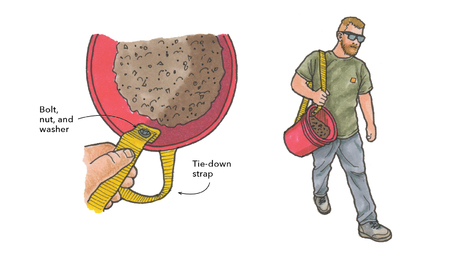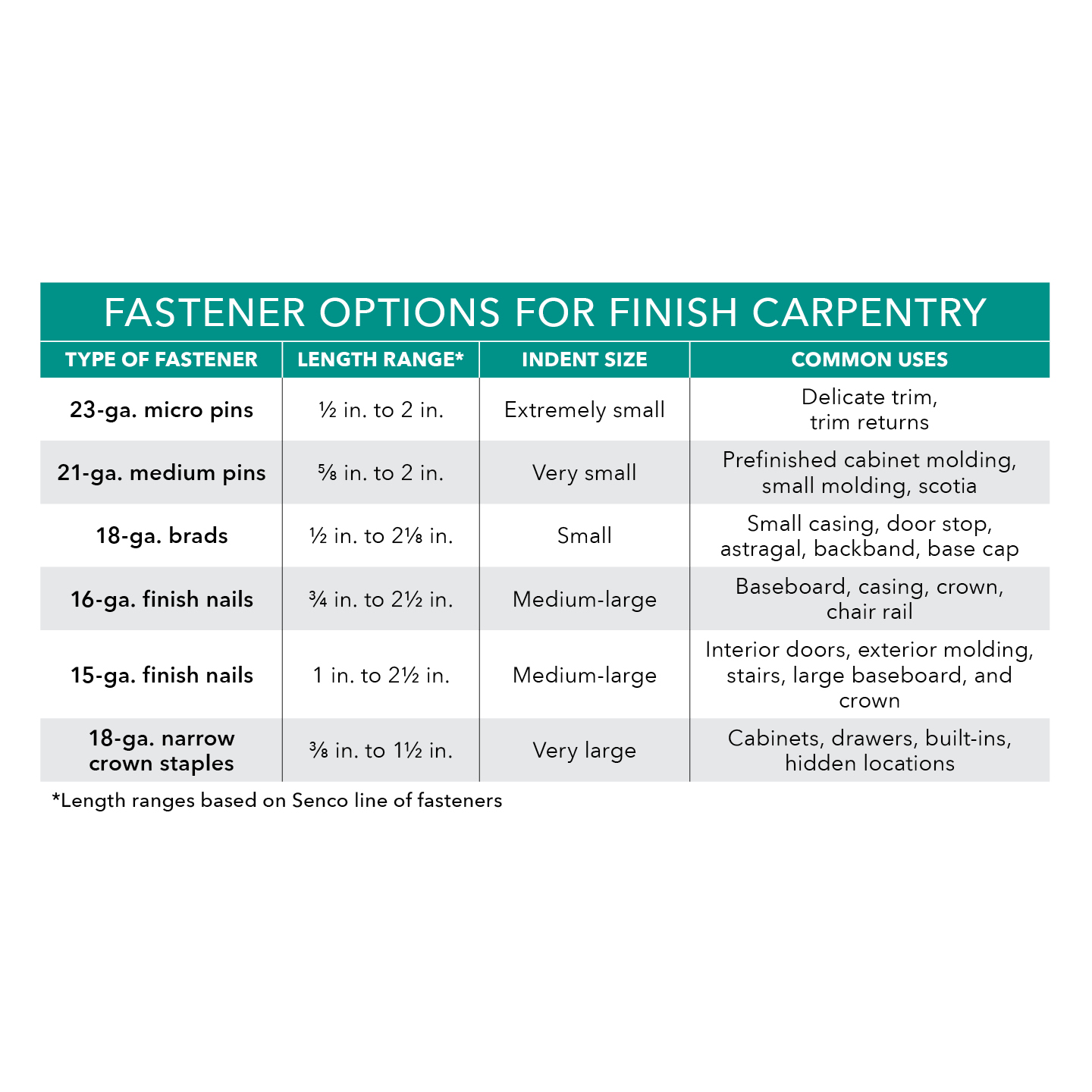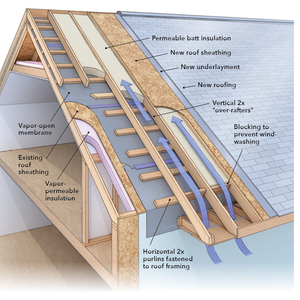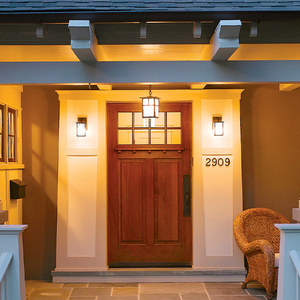Closing duplicate HVAC Return Registers
I’m installing waincoating in a dining room with a high pitched ceiling. The owner wants the wainscoating to go up 60 inches and be topped by a picture rail. The room has 6 HVAC returns registers that run along the long wall in the room — 3 low (about 12 inches off the floor) and 3 high (about 8 feet off the floor and directly above the lower registers). Each low register is on the same vertical duct as a high register above it – I believe the intention is that you can return air from different heights depending on the season. I can work the lower registers into the wall treatment through a build out and they will look fine. The upper return registers will really stick out above the picture rail and the owner wants to close them up. Because she will still have all three lower registers, she should still get adequate air from the room back to the handler. Is there any problem with removing the upper registers and drywalling over the holes? Again, these are return registers. I was not sure whether the portion of the duct between the low and high registers could become a location for mold, etc. If I can close it up, is there anything special I need to do before I drywall over the opening.
Thanks for your help.
Frank R



















Replies
Just at thought... You may want to throw some blocking above the lower registers as a fire stop. Before that, I would make sure that they do not continue up through to the second floor (if there is one) to draw air from another room also. I assume that these "ducts" use the hallow wall and do not have actual duct in them, am I correct?
Ken,
The whole second story is covered by a separate handler in the attic and all of that ductwork is run down from the attic into the rooms. (I put crown molding and built in closets in two of the bedrooms) In the dining room, there is actual ductwork that connects the upper and lower registers. It's not open space between the studs. The ductwork ends at the upper register. I sometimes hear people complain that the HVAC sub did not use enough returns. This house has them everywhere. This high/low theme runs through nearly every room in the house. In most rooms, the register covers are painted to match the decorating. Here, three registers running over the wainscoating -- on the wall you see when you first enter the room -- would take away from the detailed finish work.
Frank
One thing you need to think about is the volume of air the system is pulling in. If a system has 10 8" returns and the system works fine and the ducts are quiet then you block up 5 of them, that system still needs a certain amount of air and since now it is pulling from only 5, they will pull the air with more speed to make up for the loss of the 5 other returns. What happens most of the time with this, is the air is pulled in with a decent amount of speed and the duct will make a whistling or howling noise. I would agree with the previous post about fire blocking it, good idea that should be fairly quick. Before you start blocking it for good, test it by blocking the bottom returns and see if the system makes any noise. If it does, you could put some returns in another location to make up for the loss of those.
The central return duct runs the entire width of the house and there are over 20 returns feeding into it. Hopefully, closing 3 will not have too much of an impact, but I'll run the test you suggested. Thanks for the post. That was the answer I was hoping for.
This is totally off topic, but I think 5' is too low for a real picture rail if the owner intends to use it as such. Now a plate rail will look real handsome...
I can post some pictures of our picture rail (at 8.5') and plate rail (at 6') if you want something to show them.
I agree and thanks for the input. When I looked at what I wrote, I realized that I typed "picture rail" instead of plate rail. I just tossed out 60 inches for purposes of showing the problem with upper registers, but we have not finalized an exact height yet. The owner wants the wall treatment higher than the average chair rail but not so high as to limit her in decorating the top part of the wall. She's a decorator so, while I'm free to make suggestions regarding the dimensions of the wall frames, in the end, I'll make the frames to any height she wants.
Thanks again.
Frank,
A wall stud cavity will only pass 150 cfm (2x4, 16" o.c.) at best. Closing off one of two return grilles in each stud space will not affect the total return of the system. Removing the high grille will affect the system effectivenes in the cooling season, which is the purpose of high returns. Low returns take cooler air back to the furnace during the heating season. High returns take warmer air back to the unit.
If your customer is willing to trade some comfort for asthetics, go for it, having informed them of this and let it be their decision. To me, a well though out and properly installed system, including high prominent returns is a beautiful thing. The rest is just fluff. There will be no problem with fire spread or mold or anything else, that doesn't already exist, if you do this.
Thanks Timbo. The house has a very open floorplan -- the pitched ceiling in this room opens up to a loft area on the second floor which has its own HVAC system -- lots of celing fans, etc. I'm sure she'll want to close the 3 upper vents.
Thanks again for your input. This is a good example of why this site works so well.
FR